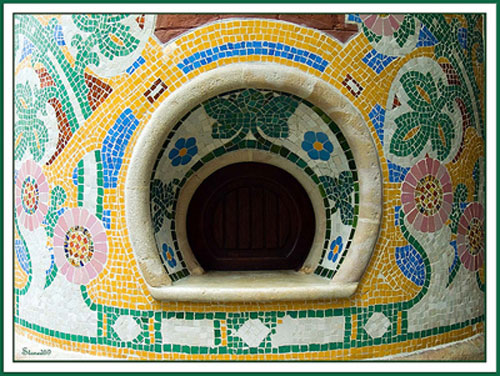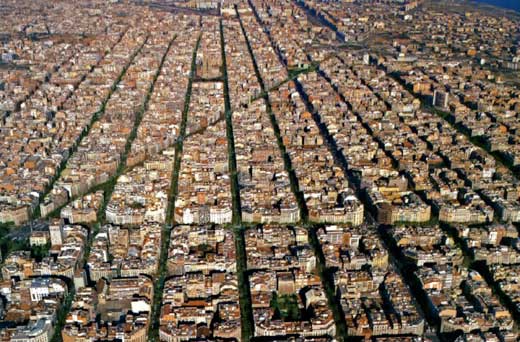Since the collapse of the walls in 1858 next to the medieval city of Barcelona, ??the Eixample (of Cerdà) is created. If we add the economic rise of the bourgeoisie and the desire to turn Barcelona into a modern and cosmopolitan city it results in the impressive development of architecture and the construction industry, which will culminate at the end of the century with the emergence of modernist architecture. But this spectacular progress will not be free of speculation and the clear division of neighborhoods according to social classes, in 1897 with the Decree of aggregations.

So decisive is the Pla Cerdà, that in 1871 the School of Architecture of Barcelona is founded. Previously lessons were given at the Llotja, but it will require the readjustment of the studing of architecture in Barcelona, ??as it was only possible in Madrid. Rogent Elias will be its first director and chooses as a model the French Ecole Polytechnique.
So, with a strong technical background and a deep theoretical study this school will form an entire generation of architects in this modernist city.
The first generation of modernists architects are from 1875, Domenech i Montaner, Josep Vilaseca i Gaudí. Their works are defined as being medieval and eclectic. Proof of this lies in the Universal Exhibition of 1888 in the Ciutadella. That was the starting point of the first modernist examples, based on a traditional and autonomous language . After the Universal Exhibition in Paris in 1898, there arises, in Catalonia, the second modernism wave, which influenced by trends in the French capital, adopt a more international and cosmopolitan language. We are speaking of art nouveau. Tradition and modernity is the paradox that best defines the modernist architecture of Catalunya.
In 1891 with the new ordinances, there will be an emergence of modernism. There will be urban sanitation and improved building ability conditions and images. This will result in more freedom in the ornamentation of the facades, which often become testimonies of social and economic power.
Thus, Barcelona will rise to new construction types, especially for the more accomodated classes: new and modern apartments are designed with a unitary facade that are the most significant of the modernist Eixample area with its own symbolic world, designed for the privacy of the bourgeois families that later became popular.
But the modern private architecture contrasts with the persistence of eclecticism and historicism of public architecture, which will adopt it as its preferred language, reflecting authority and wealth of the government promoted by the bourgeoisie, such as the Palau de la Música.
Finally, there will be spaces for working with industrial architecture, always characterized by functionality, new construction techniques, lack of ornamentation and the recovery of the native view. This is witnessed in Poblenou where their manufacturing establishments and industrial buildings are placed.
Thus architecture speaks for itself!
If you want apartments in Barcelona ??do not hesitate to rent one of these modernist houses and discover all the symbolic universe that permeates inside of them.

 English
English Translated by: Marc
Translated by: Marc
